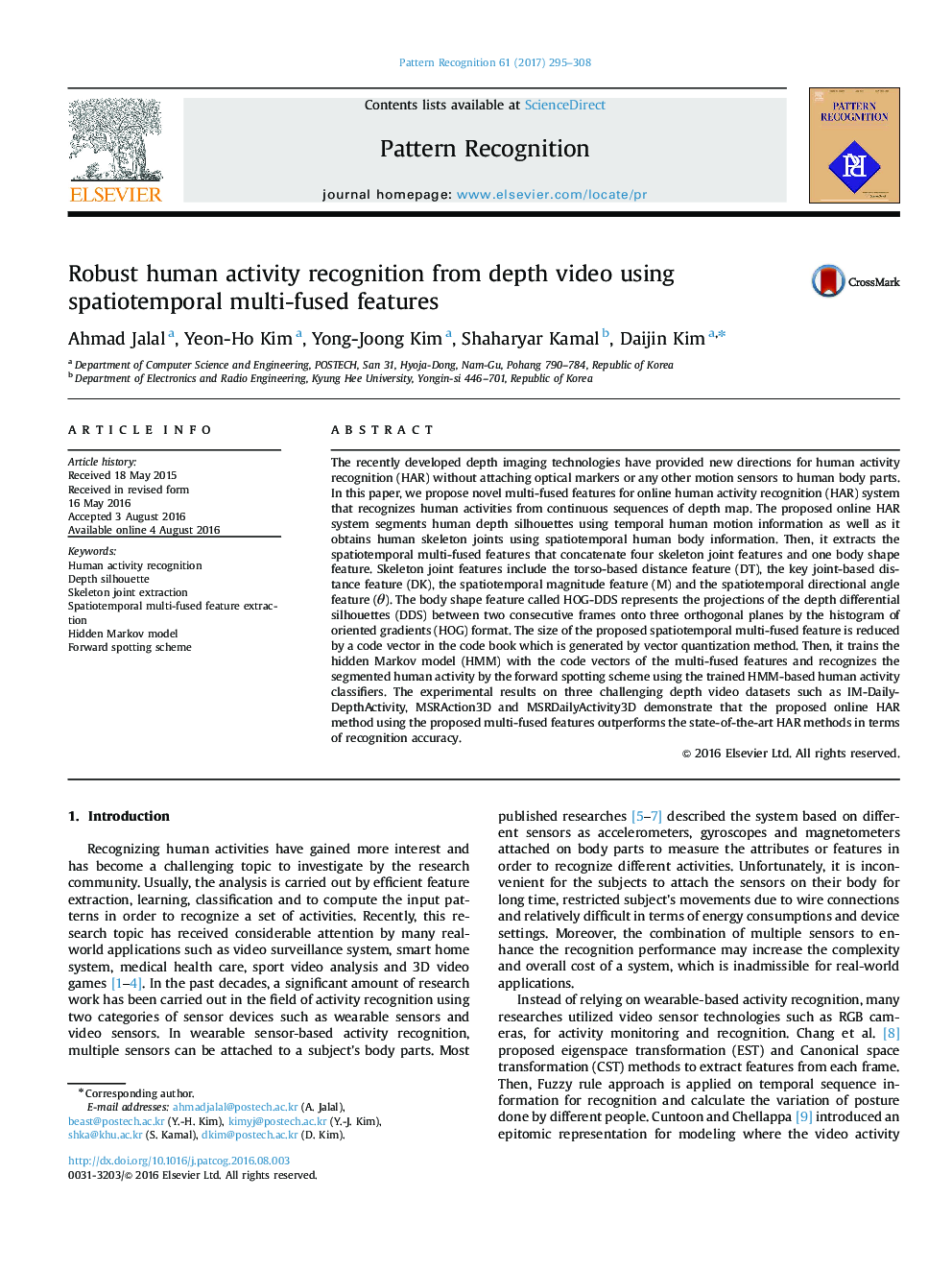| Article ID | Journal | Published Year | Pages | File Type |
|---|---|---|---|---|
| 6939755 | Pattern Recognition | 2017 | 14 Pages |
Abstract
The recently developed depth imaging technologies have provided new directions for human activity recognition (HAR) without attaching optical markers or any other motion sensors to human body parts. In this paper, we propose novel multi-fused features for online human activity recognition (HAR) system that recognizes human activities from continuous sequences of depth map. The proposed online HAR system segments human depth silhouettes using temporal human motion information as well as it obtains human skeleton joints using spatiotemporal human body information. Then, it extracts the spatiotemporal multi-fused features that concatenate four skeleton joint features and one body shape feature. Skeleton joint features include the torso-based distance feature (DT), the key joint-based distance feature (DK), the spatiotemporal magnitude feature (M) and the spatiotemporal directional angle feature (θ). The body shape feature called HOG-DDS represents the projections of the depth differential silhouettes (DDS) between two consecutive frames onto three orthogonal planes by the histogram of oriented gradients (HOG) format. The size of the proposed spatiotemporal multi-fused feature is reduced by a code vector in the code book which is generated by vector quantization method. Then, it trains the hidden Markov model (HMM) with the code vectors of the multi-fused features and recognizes the segmented human activity by the forward spotting scheme using the trained HMM-based human activity classifiers. The experimental results on three challenging depth video datasets such as IM-DailyDepthActivity, MSRAction3D and MSRDailyActivity3D demonstrate that the proposed online HAR method using the proposed multi-fused features outperforms the state-of-the-art HAR methods in terms of recognition accuracy.
Related Topics
Physical Sciences and Engineering
Computer Science
Computer Vision and Pattern Recognition
Authors
Ahmad Jalal, Yeon-Ho Kim, Yong-Joong Kim, Shaharyar Kamal, Daijin Kim,
